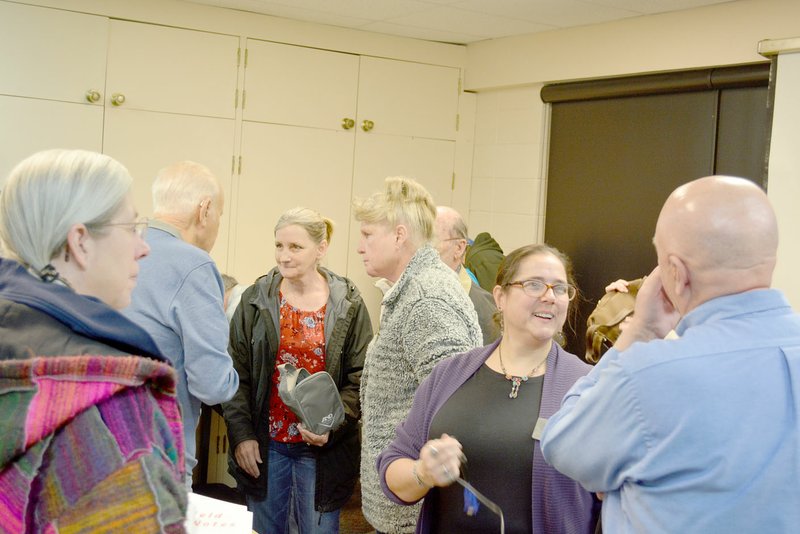Bella Vistans learned about archeology in Arkansas at Riordan Hall last Friday afternoon.
Dr. Melissa Zabecki, education outreach coordinator with the Arkansas Archeological Survey, explained this presentation was in part to celebrate Arkansas Archeology Month.
"A lot of people have a lot of misunderstandings about archeology. Archeology is not all about digging... there's so much more," Zabecki said.
Archeology studies human history, she said, and there are more than 50,000 archeological sites in Arkansas alone. The state has roughly 14,000 years of human history, she said, which is examined by what people leave behind.
A dig at Leetown found a bar and numerous horseshoes when archeologists were looking for houses, Zabecki said. Other digs unearth tools, pieces of stonework and pottery, bones of animals that were butchered, several nails and other indicators of human activity, she explained.
At a dig, she said, archeologists have a great deal of work to do.
"There were lots of crews out doing lots of very different things," Zabecki said. "There's lots of science and math that goes into this."
Old maps aren't as accurate as what humans can produce today and the landscape has changed, making it difficult to glean much useful information from them.
The digging process uses square sections, which are dug out five centimeters at a time. Larger artifacts are left in place and photographed before they're removed, bagged and tagged, she said.
A recent project looked at bluff shelters in Northwest Arkansas, she said.
Rock shelters are often looted, she said, which makes archeology difficult -- the less material researchers can find, the harder it is to make useful conclusions.
In particular, she said, organic materials -- like corncobs, woven sandals and basketry -- does not preserve in dirt, but can be found in these shelters.
"Part of this project is also to educate people that what they have is an amazing resource," Zabecki said. "The rock shelters have so much information that is totally lost elsewhere that it is so important to not mess with it too much."
Walker Shelter in Bella Vista was being hit by looters and complaints were made in 2015, before trails went near the shelter, she said, and researchers were able to briefly examine the site in 2017.
They cleaned up the looters' holes and examined artifacts, largely consisting of stones that had been worked by a human in some fashion.
A diagnostic artifact -- one that gives researchers an approximate timeframe -- was located at one point. The Calf Creek point, Zabecki said, is a spear tip design that was popular at a certain point in Arkansas history and places humans under this particular shelter 3,000 to 6,000 years ago.
Unfortunately, she said, it costs thousands and takes a great deal of man-hours to investigate further.
"We have so many projects that are on the backlog," Zabecki said.
General News on 03/20/2019

